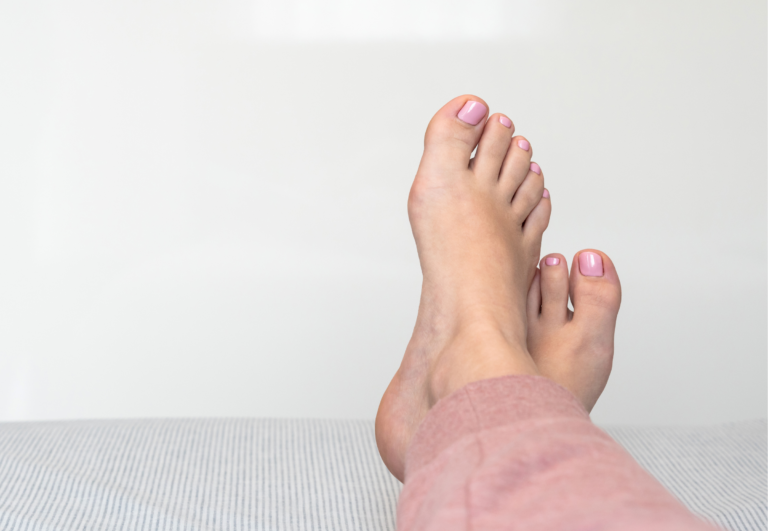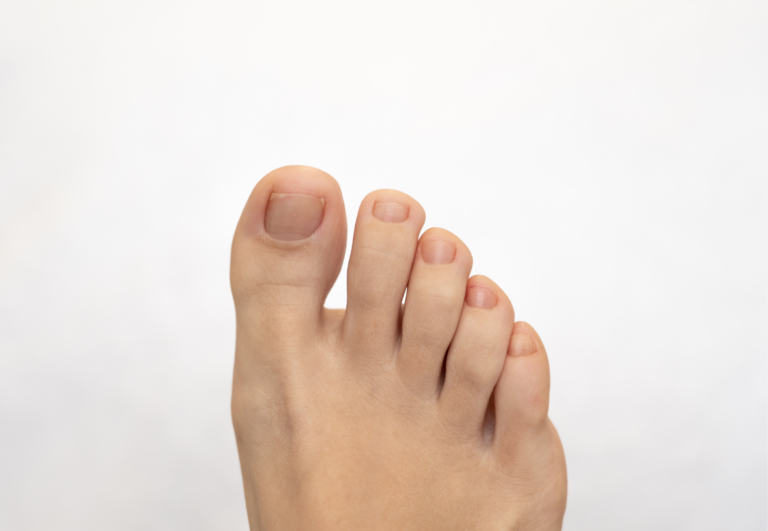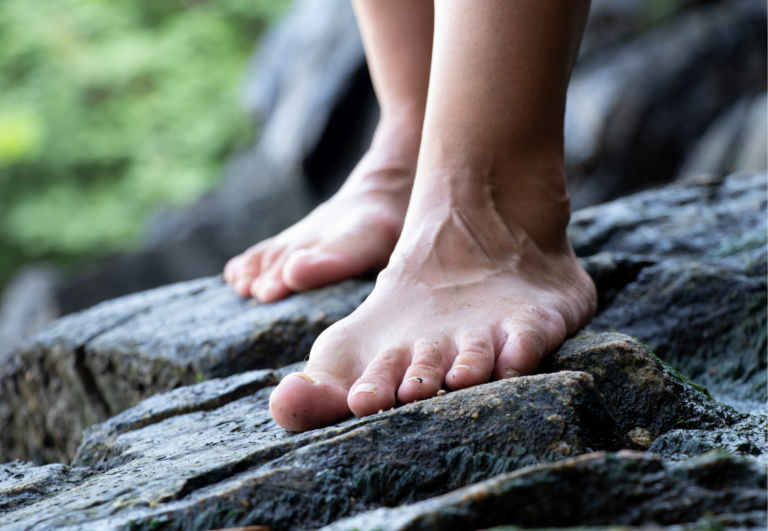How Toe Spacers Can Help with Shin Splints: Uncovering the Potential Benefits
Toe spacers, often overlooked foot care tools, have gained attention for their potential benefits in relieving foot-related discomfort. From personal experience, I’ve found that they can be particularly helpful for those suffering from shin splints, a common issue among runners and athletes. These simple devices work to realign toe positioning, which can improve overall foot function and possibly reduce the strain on the lower legs that leads to shin splints.
Utilizing toe spacers routinely may offer a non-invasive way to address the underlying biomechanical issues that contribute to shin splints. By separating the toes and encouraging proper joint alignment, the spacers can enhance the natural spread of the toes, which might alleviate some of the pressure and tension in the shins. For those exploring methods to manage shin splints, incorporating toe spacers into a broader foot care regimen could be a step towards better foot health and comfort.
How Toe Spacers Work to Alleviate Pain of Shin Splints
Toe spacers are often recommended for reducing pain associated with various foot ailments. I’ve found that their main benefits include correcting misalignments and improving blood flow, both of which can potentially ease discomfort in the feet and lower legs.
Correcting Toe Alignment and Its Effects
Toe Alignment:
- Normal Position: Toes are naturally spaced and in line.
- Misalignment: Toes that are cramped or overlapping can cause pain and lead to toe deformities.
Function of Toe Spacers:
- Separate Toes: By positioning each toe individually, spacers help maintain or return them to a more natural alignment.
- Reduce Stress: Proper alignment reduces stress on the joints and muscles of the foot.
Misaligned toes can adversely affect gait and posture, leading to pain in the shins and other parts of the body. Toe spacers work by gently guiding the big toe and other digits into a better position, promoting a healthier distribution of weight and reducing the strain on the leg muscles that can contribute to shin splints.
Improving Circulation and Reducing Inflammation
Circulation Enhancement:
- Aiding Flow: Spacers encourage a more open toe position, enhancing circulation to the feet.
- Decreasing Swelling: Good circulation aids in the reduction of inflammation and swelling, often associated with foot pain.
Effects on Inflammation:
- Spatial Accommodation: By preventing the toes from compressing each other, there’s less likelihood for inflammation.
- Reduction of Pain: As inflammation subsides, so does the pain it causes.
Better circulation not only nourishes tissues and promotes healing but also helps flush out excess fluids and inflammatory byproducts. When the toes are not cramped, blood flows more freely, reducing the pain that often accompanies swelling and inflammation. This can be particularly relevant for individuals experiencing shin splints, as reduced foot inflammation might lessen the stress on the shins during movement.
What Are Shin Splints?

As a toe spacer expert, I’ve come to understand how closely tied foot mechanics are to shin splints. The correct alignment and function of our feet can make a significant difference in the health of our lower legs.
The Role of Foot Mechanics in Shin Splints
Shin splints, otherwise known as medial tibial stress syndrome (MTSS), are often the result of repetitive stress on the shinbone and the connective tissues that attach the shinbone to the muscles surrounding it. Improper foot mechanics, such as excessive pronation (inward rolling of the foot) or supination (outward rolling of the foot), can increase the risk of developing shin splints.
- Excessive pronation: Can lead to increased stress along the inner side of the shinbone.
- Supination: Can contribute to stress on the outer side of the shinbone.
- Flat feet: Often lack proper arch support, leading to strain on the lower leg.
Good foot mechanics, which include proper arch support and alignment, can help mitigate these stresses, potentially reducing the risk of shin splints.
Common Foot Ailments: From Bunions to Flat Feet
Several foot ailments can contribute to the development of shin splints by altering natural foot mechanics.
- Bunions: Protrusions at the base of the big toe can cause an inward rolling of the foot.
- Flat Feet: The absence of a normal arch can lead to an uneven distribution of body weight, which can result in compensatory changes in gait that stress the shins.
- Foot Deformities: Conditions like hammertoes can disrupt normal toe alignment and lead to abnormal stress on the foot and shin.
By using toe spacers, individuals can address some foot deformities and alignments, promoting natural toe spacing and position that can support proper foot mechanics and reduce the risk of shin splints.
The Benefits of Toe Spacers for Athletic Performance
Toe spacers can enhance athletic performance by promoting better balance and stability, and aiding in the prevention and recovery from sports-related injuries.
Enhancing Balance and Stability
Toe spacers work to realign the toes to their natural position, which can improve my sense of balance during physical activities. This realignment helps distribute my weight more evenly across my feet, enhancing stability. This is particularly helpful when I engage in sports that require precise footwork.
- Balance improvements: Realigned toes contribute to more even weight distribution.
- Enhanced Stability: Proper toe alignment aids in stabilizing my footing during dynamic movements.
Prevention and Recovery from Sports-Related Injuries
Regular use of toe spacers can contribute to the prevention of common sports-related injuries. The spacers allow the toes to stretch properly, which can improve circulation and reduce the risk of conditions like blisters, corns, and calluses. When recovering from foot-related injuries, the spacers encourage proper toe alignment that supports the healing process.
- Injury Prevention: Stretching toes may decrease the risk of pressure-induced foot injuries.
- Enhanced Recovery: Improved circulation and toe alignment can facilitate the body’s natural healing mechanisms post-injury.
Choosing the Right Toe Spacers
Selecting the right toe spacers is essential for both comfort and effectiveness. Below, I’ll guide you through key considerations to ensure you make an informed choice.
Material Considerations: Silicone vs Foam vs Gel
Silicone: Durable and flexible, silicone toe spacers are a popular choice. They offer a balance between firmness and comfort, which is crucial for providing the necessary toe alignment without causing discomfort. Silicone is also easy to clean and hypoallergenic, making it suitable for most users.
- Pros: Long-lasting, flexible, hypoallergenic
- Cons: May be more expensive than other materials
Foam: Foam toe spacers are softer and often cheaper than silicone. They can provide a gentle separation but may not be as resilient or supportive as silicone or gel. These are ideal for temporary use or for users who require minimal toe correction.
- Pros: Soft, lightweight, cost-effective
- Cons: Less durable, may compress over time
Gel: Gel toe spacers conform snugly to the contours of your toes, offering a customized fit. They tend to provide cushioning and can absorb shock, which may benefit active individuals. However, they may not be as breathable as silicone spacers.
- Pros: Shock-absorbing, cushioning, contour to toes
- Cons: Less breathable, can be stickier
Recommended Material: For most people, silicone toe spacers balance comfort and functionality effectively.
Finding the Perfect Fit for Your Feet
The right size toe spacer is crucial. It should separate your toes without causing pain or excessive pressure. Consider the following when finding your fit:
- Toe Width: Ensure the spacers fit comfortably between your toes.
- Shoe Compatibility: Check that the spacers can be worn with your regular footwear.
- Activity Level: Active users may need more durable spacers, like silicone, to withstand movement without slipping.
Sizing Tip: Measure the space between your toes and compare it with the dimensions provided by spacer manufacturers to find the best fit.
Shoe Note: Always check spacer compatibility with your footwear to avoid discomfort while walking or during activities.
Incorporating Toe Spacers into Your Foot Care Routine
Toe spacers are a simple addition to your foot care practice that can assist in realigning toes, enhancing foot strength, and possibly aiding in the relief of shin splints. Used in the right activities, they can be a valuable tool in maintaining foot health.
Exercises and Activities Compatible with Toe Spacers
- Walking: Integrating toe spacers into your daily walks can help in promoting toe realignment and foot strength.
- Running: Although running with toe spacers isn’t universally recommended, some users find that short, careful runs can build foot muscles.
- Yoga: Many yoga poses inherently focus on foot strength and alignment; incorporating toe spacers can enhance these benefits.
Exercise Routine Example:
- Warm-Up Walk: 5-10 minutes with toe spacers to acclimate the foot muscles.
- Yoga Session: Focus on poses that involve balance and foot strength, such as the tree pose or warrior series.
- Cool Down: A gentle walk or stretch, keeping the toe spacers on to encourage alignment.
Long-Term Use and Care for Toe Spacers
- Daily Routine: Start with shorter durations, gradually increasing as your feet become accustomed to the spacers.
- Hygiene: Clean your toe spacers regularly with mild soap and water to prevent any buildup of bacteria.
Care Tips Table:
| Usage Frequency | Cleaning Routine | Longevity |
|---|---|---|
| Daily | After each use | 6-12 months |
| Occasionally | Weekly | 1-2 years |
By integrating toe spacers into your foot care routine and ensuring proper care, you position yourself for better foot health and may contribute to the alleviation of discomfort from conditions such as shin splints. Remember to listen to your feet and adjust usage as needed.





